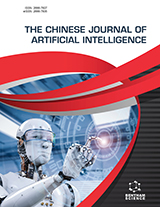Abstract
In this chapter, we discuss a bio-inspired computational model that utilizes
heuristic techniques. This model is robust and possesses optimization capabilities to
address obscure and substantiated problems. Swarm intelligence is an integral part of
this bio-inspired model, functioning within groups. The nature of these algorithms is
non-centralized, drawing inspiration from self-management to solve real-life complex
computational problems. Examples include the traveling salesman problem, the
shortest path problem, optimal fitness functions, security systems, and the use of
optimal computational resources in various areas. The deployment of a Wireless Sensor
Network involves a group of sensor nodes, typically implemented at remote locations
to observe environmental behaviors. However, these sensor nodes operate on batteries,
making replacement or recharge nearly impossible once deployed. Energy is a crucial
resource for wireless sensor networks to extend their lifetime. While numerous
concepts have been proposed to improve the lifespan of wireless sensor networks,
many issues in Wireless Sensor Networks (WSN) are designed as multi-dimensional
optimization problems. The bio-inspired model offers a solution to overcome these
challenges. Swarm Intelligence proves to be a simple, efficient, and effective
computational methodology for addressing various issues in wireless sensor networks,
including node localization, clustering, data aggregation, and deployment. The Swarm
Intelligence methodology encompasses several algorithms such as Ant Colony
Optimization (ACO), Particle Swarm Optimization (PSO), Reactive Search
Optimization (RSO), Fish Swarm Algorithm (FSA), Genetic Algorithm (GA), Bacterial
Foraging Algorithm (BFA), and Differential Evolution (DE). This chapter introduces
Swarm Intelligence-based optimization algorithms and explores the impact of PSO in
wireless sensor networks.






















